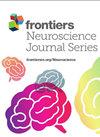Target engagement of the subgenual anterior cingulate cortex with transcranial temporal interference stimulation in major depressive disorder: a protocol for a randomized sham-controlled trial
IF 3.2
3区 医学
Q2 NEUROSCIENCES
引用次数: 0
Abstract
BackgroundTranscranial temporal interference stimulation (tTIS) is a new, emerging neurostimulation technology that utilizes two or more electric fields at specific frequencies to modulate the oscillations of neurons at a desired spatial location in the brain. The physics of tTIS offers the advantage of modulating deep brain structures in a non-invasive fashion and with minimal stimulation of the overlying cortex outside of a selected target. As such, tTIS can be effectively employed in the context of therapeutics for the psychiatric disease of disrupted brain connectivity, such as major depressive disorder (MDD). The subgenual anterior cingulate cortex (sgACC), a key brain center that regulates human emotions and influences negative emotional states, is a plausible target for tTIS in MDD based on reports of its successful neuromodulation with invasive deep brain stimulation.MethodsThis pilot, single-site, double-blind, randomized, sham-controlled interventional clinical trial will be conducted at St. Michael’s Hospital – Unity Health Toronto in Toronto, ON, Canada. The primary objective is to demonstrate target engagement of the sgACC with 130 Hz tTIS using resting-state magnetic resonance imaging (MRI) techniques. The secondary objective is to estimate the therapeutic potential of tTIS for MDD by evaluating the change in clinical characteristics of participants and electrophysiological outcomes and providing feasibility and tolerability estimates for a large-scale efficacy trial. Thirty participants (18–65 years) with unipolar, non-psychotic MDD will be recruited and randomized to receive 10 sessions of 130 Hz tTIS or sham stimulation (经颅颞部干扰刺激对重度抑郁障碍患者前扣带回下皮层的目标参与:随机假对照试验方案
背景经颅颞部干扰刺激(tTIS)是一种新兴的神经刺激技术,它利用两个或两个以上特定频率的电场来调节大脑所需空间位置的神经元振荡。tTIS 的物理学优势在于能以非侵入性方式调节大脑深层结构,对选定目标以外的上覆皮层刺激极小。因此,tTIS 可以有效地用于治疗大脑连接紊乱的精神疾病,如重度抑郁症(MDD)。前扣带回下皮层(sgACC)是调节人类情绪和影响负面情绪状态的一个关键大脑中枢,根据有创深部脑刺激成功对其进行神经调节的报道,它是 tTIS 治疗 MDD 的一个可信靶点。主要目的是利用静息态磁共振成像(MRI)技术证明 130 Hz tTIS 对 sgACC 的目标参与。次要目标是通过评估参与者的临床特征变化和电生理结果,估计 tTIS 对 MDD 的治疗潜力,并为大规模疗效试验提供可行性和耐受性估计。将招募 30 名患有单极、非精神病性 MDD 的参与者(18-65 岁),并随机分配他们接受 10 次 130 Hz tTIS 或假刺激(每组 15 人)。试验内容包括治疗前与治疗后的大脑 3T 磁共振成像扫描、临床评估以及静息状态下和听觉错配负性(MMN)范式中的脑电图采集。 讨论这项研究是首次在精神疾病患者中开展的临床试验之一,旨在研究重复性 tTIS 的治疗潜力及其神经生物学机制。本试验获得的数据将用于优化 tTIS 方法和设计大规模疗效试验。该领域的研究有可能为患有 MDD 和电路相关疾病的患者提供一种新的治疗选择,并有可能促进 tTIS 治疗应用获得监管部门批准的进程。临床试验注册ClinicalTrials.gov,标识符 NCT05295888。
本文章由计算机程序翻译,如有差异,请以英文原文为准。
求助全文
约1分钟内获得全文
求助全文
来源期刊

Frontiers in Neuroscience
NEUROSCIENCES-
CiteScore
6.20
自引率
4.70%
发文量
2070
审稿时长
14 weeks
期刊介绍:
Neural Technology is devoted to the convergence between neurobiology and quantum-, nano- and micro-sciences. In our vision, this interdisciplinary approach should go beyond the technological development of sophisticated methods and should contribute in generating a genuine change in our discipline.
 求助内容:
求助内容: 应助结果提醒方式:
应助结果提醒方式:


